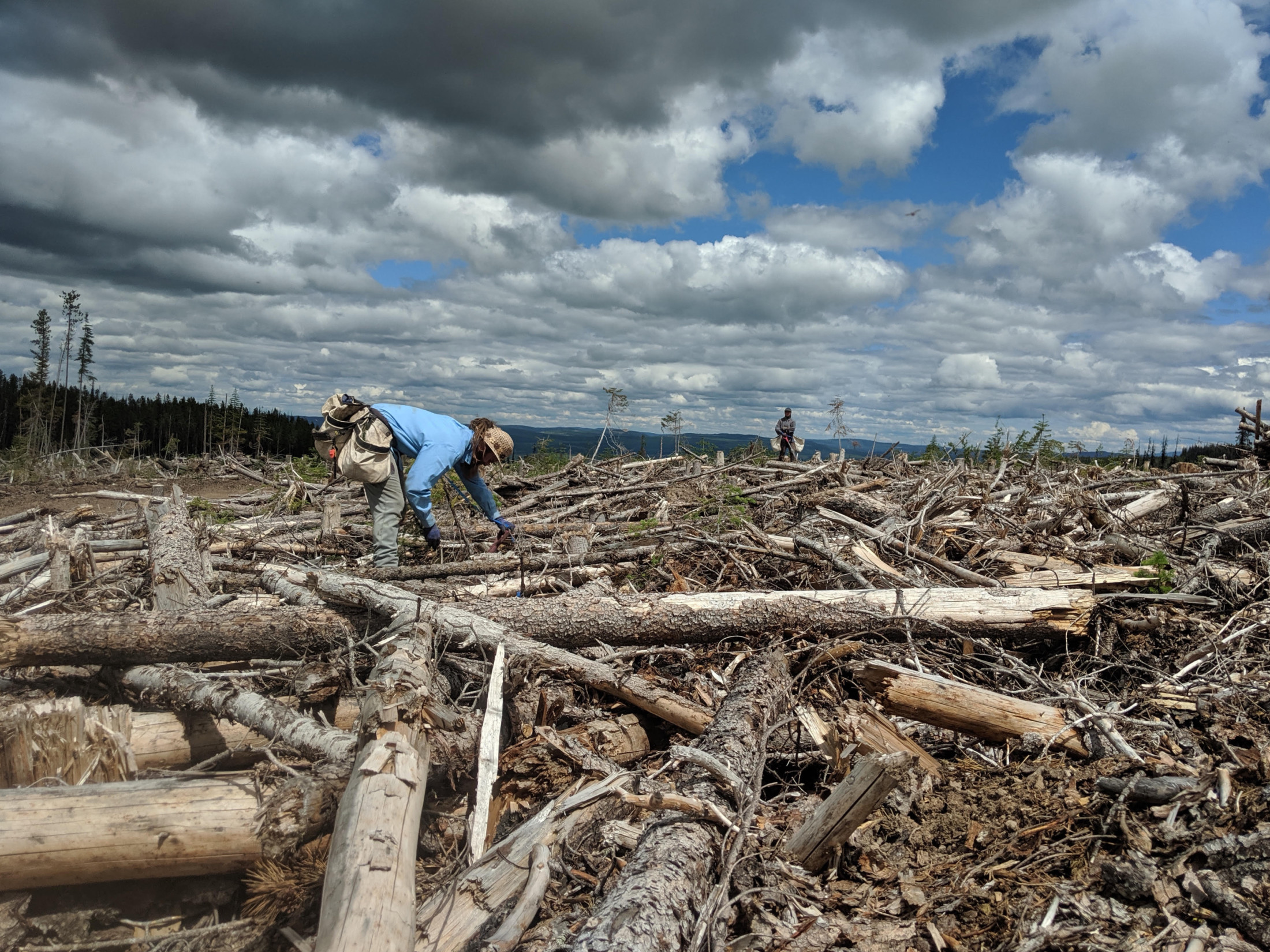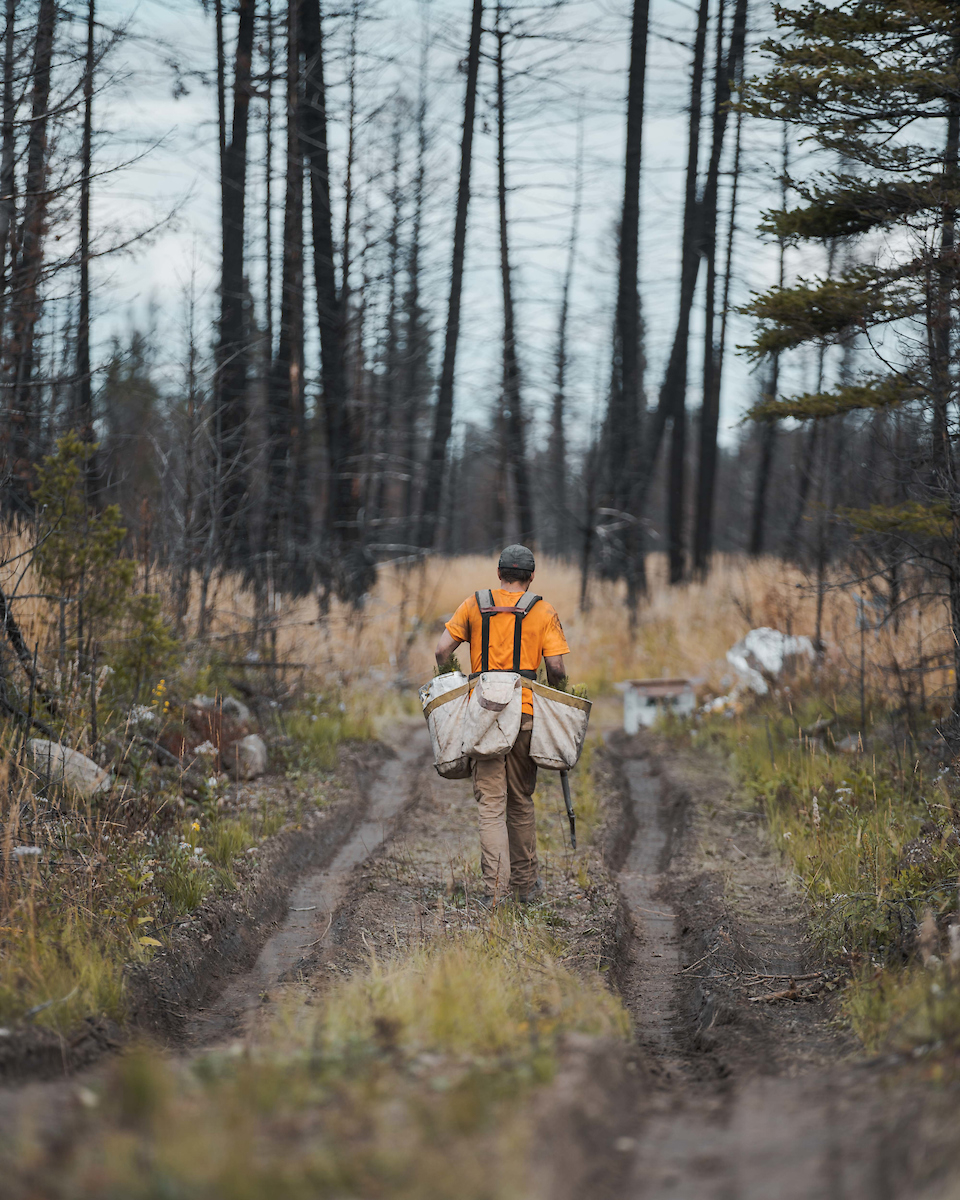
Danielle Smith says separation is about alienation. It’s really about oil
The Alberta premier’s separation rhetoric has been driven by the oil- and secession- focused Free...
After weeks of uncertainty, the British Columbia government has given tree-planting companies the green light to set up worker camps throughout the interior of the province, where up to 5,000 planters could eventually be housed in remote camps or at local motels during the COVID-19 outbreak.
The announcement comes weeks after B.C.’s chief forester, Diane Nicholls, delayed the start of what was to be — and may still be — a record-setting planting season, so that the province and planting companies could figure out how to proceed in the face of the pandemic.
About 400 tree planters have been planting trees in areas up and down the province’s coastline since February and their camps have remained COVID-free, said John Betts, executive director of the Western Forestry Contractors’ Association, which represents tree-planting companies.
But that planting work began well before coronavirus began to spread in B.C., and represents only a fraction of the trees to be planted province-wide. The vast majority of seedlings are slated for the Interior where the planting program was in doubt until the government’s announcement early Friday afternoon to give tree-planting in the region the go-ahead.
“We believe this important work can proceed with the proper precautions in place,” said Doug Donaldson, Minister of Forests, Lands, Natural Resource Operations and Rural Development.
“Seasonal tree planters are a crucial part of ensuring B.C. can address the impacts of climate change and wildfires and can build a resilient forest sector and meet global demand for wood products.”
But many people are skeptical that planting can proceed. That includes experienced planters who said they are doubtful workers will do a proper job of self-isolating before they commence their remote work.
New guidelines released by the provincial Ministry of Health and the BC Centre for Disease Control specify that a key element of keeping workers safe will be to try to limit the number of people that any one planter or camp worker is in contact with during the lifetime of a given planting project.
Chief Forester Nicholls said that a rigorous set of guidelines is now in place for planting companies, adding she is fairly confident that the bulk of the trees to be planted this year will get planted. Although much will depend on events that are always beyond the industry’s control, like fires, floods and sustained periods of dry hot weather.
She said the provincial government itself will also be taking extraordinary measures this year to protect the communities where tree planting crews may be housed.
“The province will be providing on-site security at hotels and motels where planters are staying, to ensure that tree planters adhere to the health officers’ orders and guidance,” Nicholls said.
Craig Turney, who planted trees for five years in B.C. after moving to the province from the Ottawa area 10 years ago, said he isn’t so sure the province’s new catalogue of rules will be followed.
He lives in a communal house with 10 other people in Victoria. They’ve done their best to follow COVID-19 protocols, he said, but “perfect isolation” has not been possible. Yet, tree-planting friends of his, who said they do not want to risk spreading the virus to remote northern communities, have actually proposed “isolating” themselves at his home for the next 14 days before heading off to their camps.
“They’re the people that I would trust the most of my tree-planting friends and they still think that living in a communal house counts as self-isolating,” Turney told The Narwhal. “There’s just no way that 5,000 people are going to properly self-isolate without any kind of oversight.”

Tree planting in B.C. Photo: Johann Simundsson
“In situations where employees are required to work together in close proximity to complete tasks, the employer will utilize work pods,” the new guidelines read in part. “These work pods will also include camp and kitchen staff as well as field worker/transport. The number of staff in each work pod should be kept to a minimum and be six or less whenever possible. These pods should stay together for as long as possible during the project.”
According to industry and the provincial government, this year’s planned planting season was in excess of 310 million trees, about 60 million more trees than planted on average in each of the previous ten years.
Nearly one third of those trees, mostly funded directly by provincial or federal government funds, are slated for planting in areas of the province where wildfires and other disturbances have occurred. The remainder are almost entirely destined for the restocking of industrial clear-cuts.

Some tree planters have expressed concern that B.C.’s new silviculture guidelines during the coronavirus pandemic are not enough to protect remote communities. Photo: Ben Hemmings / One Tree Planted

B.C.’s out-of-province planters have tended to originate from Ontario and Quebec — two provinces hit hard by COVID-19. Photo: Ben Hemmings / One Tree Planted
Getting those trees planted, however, will require roughly 5,000 workers. About half of those workers will have to come from other provinces.
Historically, B.C.’s out-of-province planters have tended to originate from Ontario and Quebec — two provinces hit hard by COVID-19.
Miles Sanoy, who oversees operations at Dynamic Reforestation, a company in the Cariboo-Chilcotin region, said he has 150 B.C.-based planters that can be quickly brought on board. But questions hang over how easily it will be to augment that number with planters from outside the province. Like others, Sanoy said roughly half his work crew typically comes from outside B.C.
The prospect of workers fanning out across the province and working in close proximity to remote Indigenous communities, in particular, is an issue of concern for industry and government.
Gina Mowatt, is a Gitxsan First Nation member, who has voiced concern about industrial work camps near First Nation communities for some time.
“Our people . . . are living on reserve in small communities who are already not getting, you know, the bare minimum of health care,” Mowatt, who is working on her PhD at the School of Child and Youth Care at the University of Victoria, told The Narwhal.
“People making decisions to allow 5,000 transient workers into our territories during a pandemic is absurd.”
Up until the pandemic Mowatt travelled frequently for her work in a number of Gitxsan communities including Gitwangak, Gitanyow, Kispiox and Hazelton.
She said the risks to residents in those small communities and other First Nation communities throughout the province are simply too great to allow for close proximity to industrial work camps.
“Whether it’s a pipeline, or whether it’s tree-planting . . . it doesn’t matter what industry it is. It’s a fact. It’s very clear. It’s a huge risk and it puts our people at risk,” Mowatt said.
But other First Nation members said they are cautiously and conditionally approving of tree planting efforts in their regions this year.
Stewart Alec, chief of the Nazko First Nation, said his community is dealing with an enormous number of challenges even without the pandemic. The nation’s main reserve, which is home to 160 people, is about 100 kilometres west of Quesnel.
The community has been hit hard in recent years by emergency evacuations triggered by flooding and by intense wildfires. The community has already sandbagged in anticipation of rising waters this spring.
A combination of wildfires, pine beetle attacks and heightened logging activities — in response to the beetle attacks — have stripped the region of millions of living trees, which is elevating flood risks, Alec said.
Amid coronavirus pandemic, some B.C. communities brace for flooding as well
‘Hundreds of hectares of moonscape’: B.C. spruce beetle infestation used to accelerate clear cuts
It’s for that reason the nation cautiously supports planting in the immediate region this year.
But Alec said the Nazko told the planting companies they could only proceed under the strictest protocols, including zero contact between planters and his community. The companies have agreed to pay for monitors from the nation to track all movements at the camps.
If the protocols around worker movement in and out of the camps and through his community are breached, Alec said, “the whole thing will be shut down.”
There are approximately 30 people living on the reserve that are either elderly or potentially vulnerable to the virus, Alec said.
Colton Hash, who has planted trees for seven seasons, said he is concerned that there are many companies that may feel they have no choice but to go and plant. If they decline they could risk losing work in future years.
Tree-planting companies generally get contracts from logging companies that are legally required to reforest what they log. For a planting company to now turn around and not do that work out of a concern about the virus’s spread would be running a huge risk, Hash said.
“They don’t really have the option to say no without devastating economic impacts and without, like, their company falling apart,” Hash said.
He said that he personally will not plant this season out of a concern for someone in his household who would be particularly vulnerable should they be stricken with the virus.
Former chief medical officer urges B.C. to shut industrial work camps during coronavirus pandemic
Like what you’re reading? Sign up for The Narwhal’s free newsletter.
Get the inside scoop on The Narwhal’s environment and climate reporting by signing up for our free newsletter. A $335 million funding commitment to fund...
Continue reading
The Alberta premier’s separation rhetoric has been driven by the oil- and secession- focused Free...

Canada’s first-ever Indigenous governor general doesn’t play favourites among our majestic natural wonders, but she...

In Alberta, a massive open-pit coal mine near Jasper National Park is hoping to expand...
